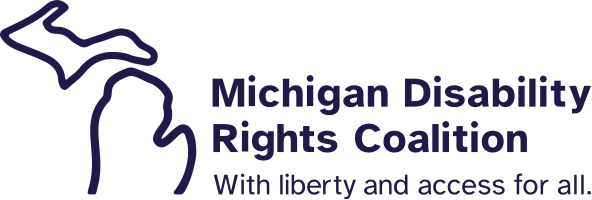Transitioning from School to Life: AT Considerations
Thursday, March 8, 2018

By Laura Hall, MATP Staffer

Transitioning from school to life is an exciting time for any student. Yet, accessing assistive technology once out of school can be a much different process. In K-12, the Individuals with Disabilities Education Act (IDEA) requires that assistive technology be considered for all students during the IEP process. If AT is determined to be necessary, the school district must provide it. School districts also have access to ALT + Shift’s AT lending library. The lending library allows schools to borrow devices for up to eight weeks, enabling the IEP team to evaluate the effectiveness of the AT before purchasing the product.
The process changes once a student transitions out of high school. Students are no longer covered under the IDEA and schools are no longer obligated to provide assistive technology. This means that students must be more proactive in advocating for the assistive technology they need whether they are transitioning to higher education or employment. Students should be involved in transition and IEP meetings to discuss and prepare for their assistive technology needs beyond high school. In K-12 education AT is considered the property of the school district, however, it may be worth asking if the student can take the assistive technology with them beyond high school or purchase it from the district.
In higher education, the student is responsible for pursuing the AT and accommodations they need in college. Most colleges and universities have disability services offices that can help with this. Professors may require a formal letter to request accommodations, like extra time on tests, or a notetaker in classes. The Michigan Association of Higher Education and Disability (MI-AHEAD) has resources on transitioning from high school to secondary education, including a list of considerations related to AT and accommodations.
 Michigan Rehabilitation Services can help students transitioning from school to work. through their Pre-Employment Services. They can attend IEP’s and offer consultation services beginning at age 14, so becoming involved with MRS early may support the transition process. The Youth Transition Services FAQ document through MRS contains a wealth of information about the services they provide.
Michigan Rehabilitation Services can help students transitioning from school to work. through their Pre-Employment Services. They can attend IEP’s and offer consultation services beginning at age 14, so becoming involved with MRS early may support the transition process. The Youth Transition Services FAQ document through MRS contains a wealth of information about the services they provide.
For more information on transitioning from high school to life, check out the resources below:
- Michigan Alliance for Families AT page
- Family Information Guide to Assistive Technology and Transition Planning
- Transitions in Translation website, transition to college “The Ultimate Accommodations Guide Toolkit” Cost is $12.99 They also have a transition course which cost $129.
The Michigan Assistive Technology program also has an archived webinar “AT and Secondary Education” and a resource document as well.
Have you transitioned successfully from school to life? What was your experience? Do you have any other resources to share?

